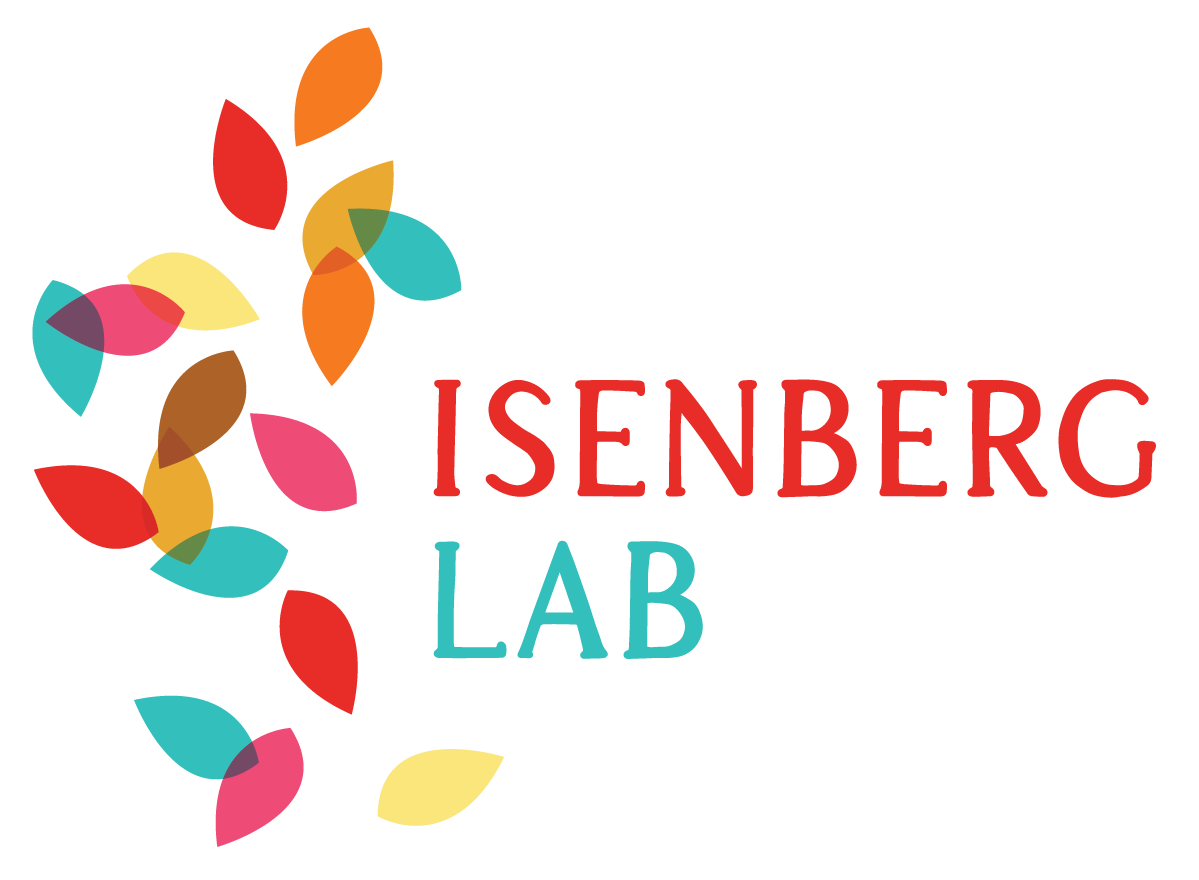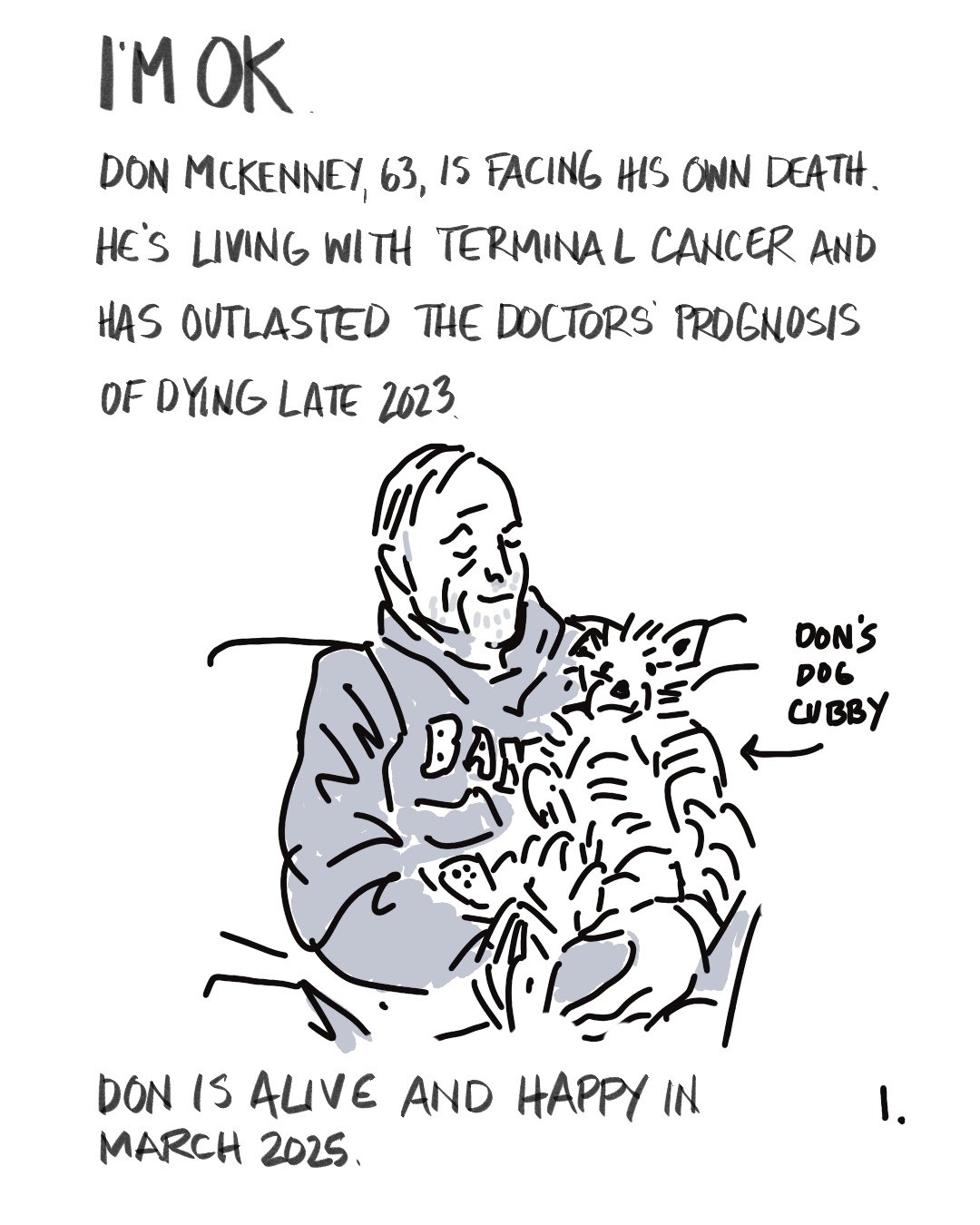
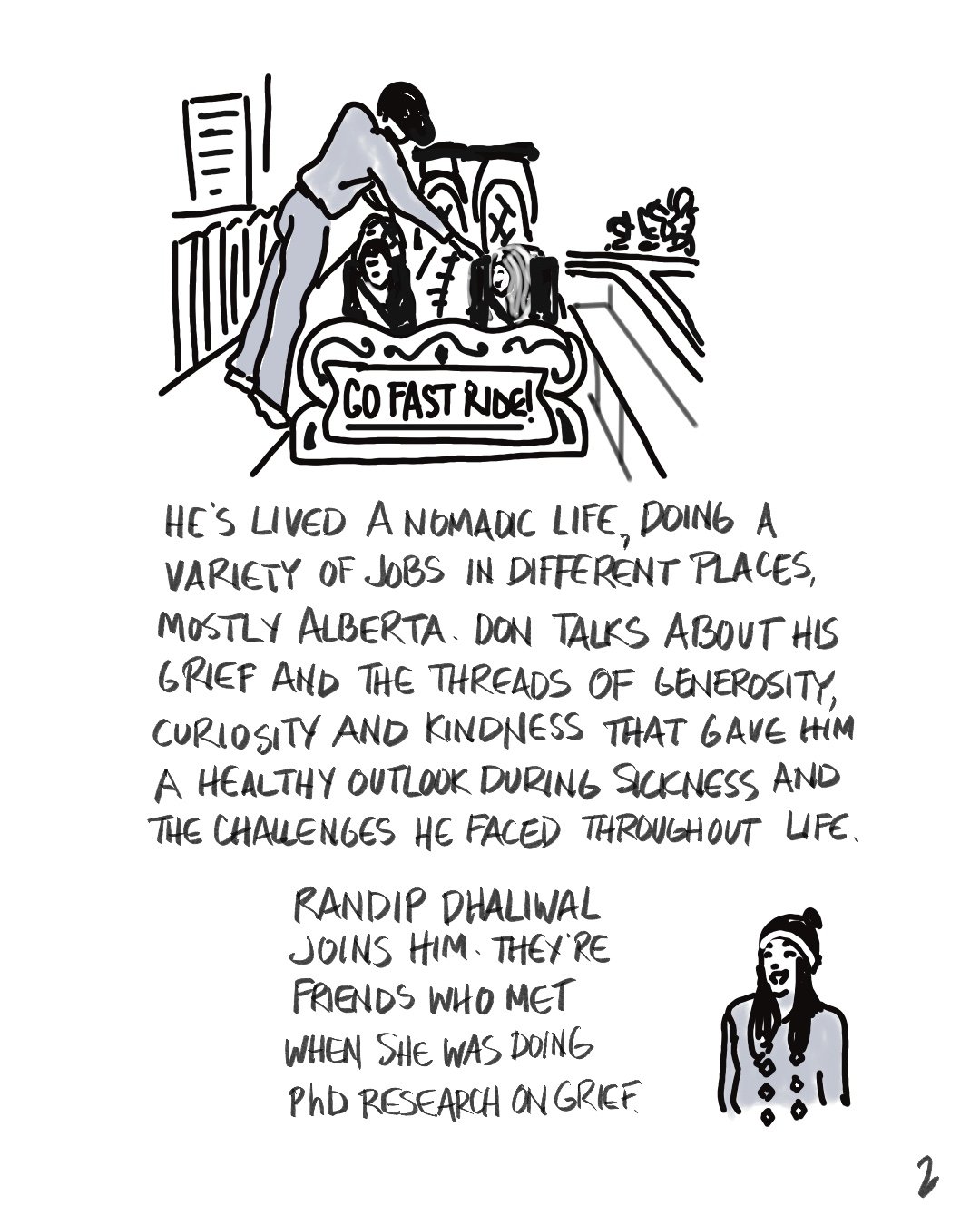
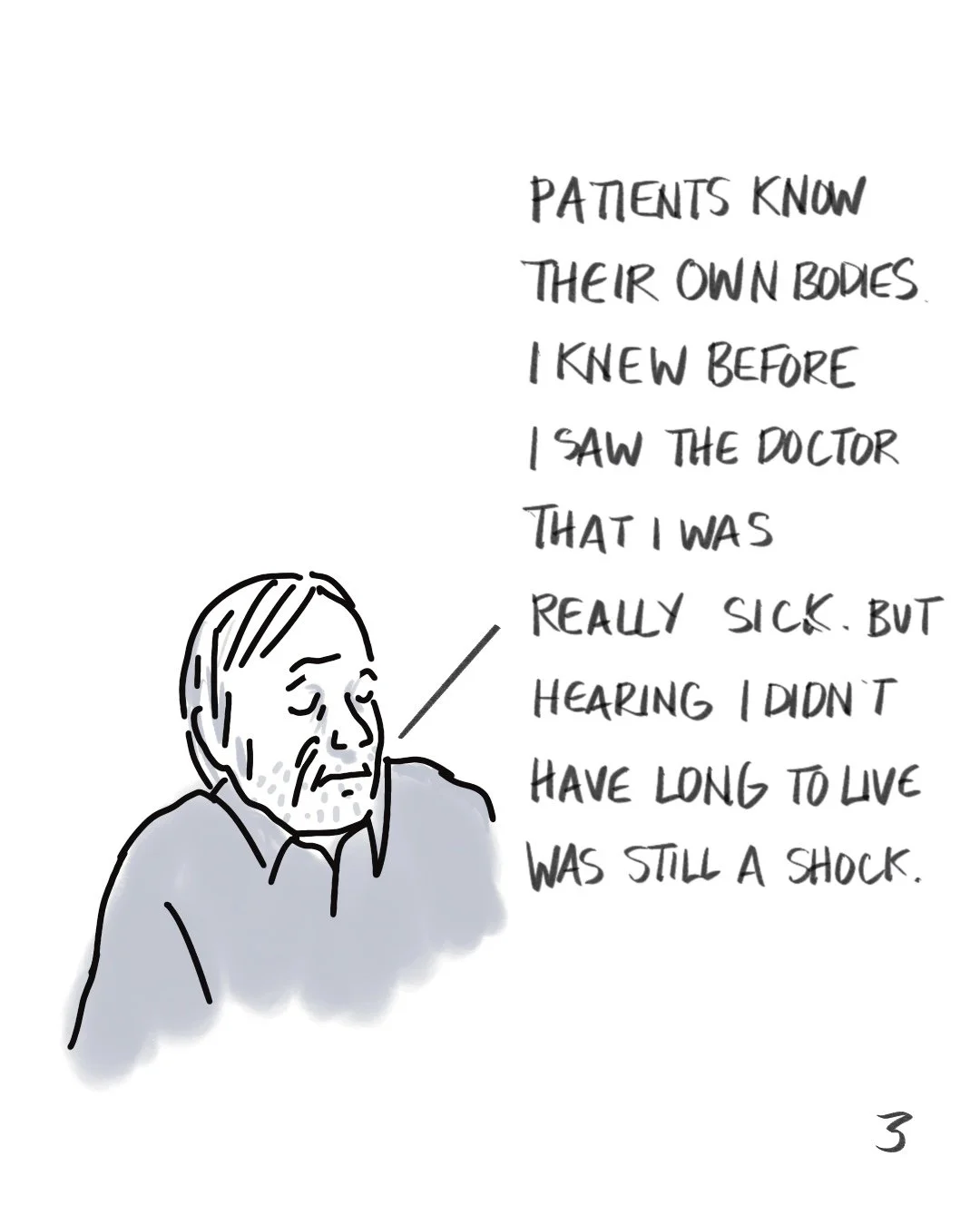
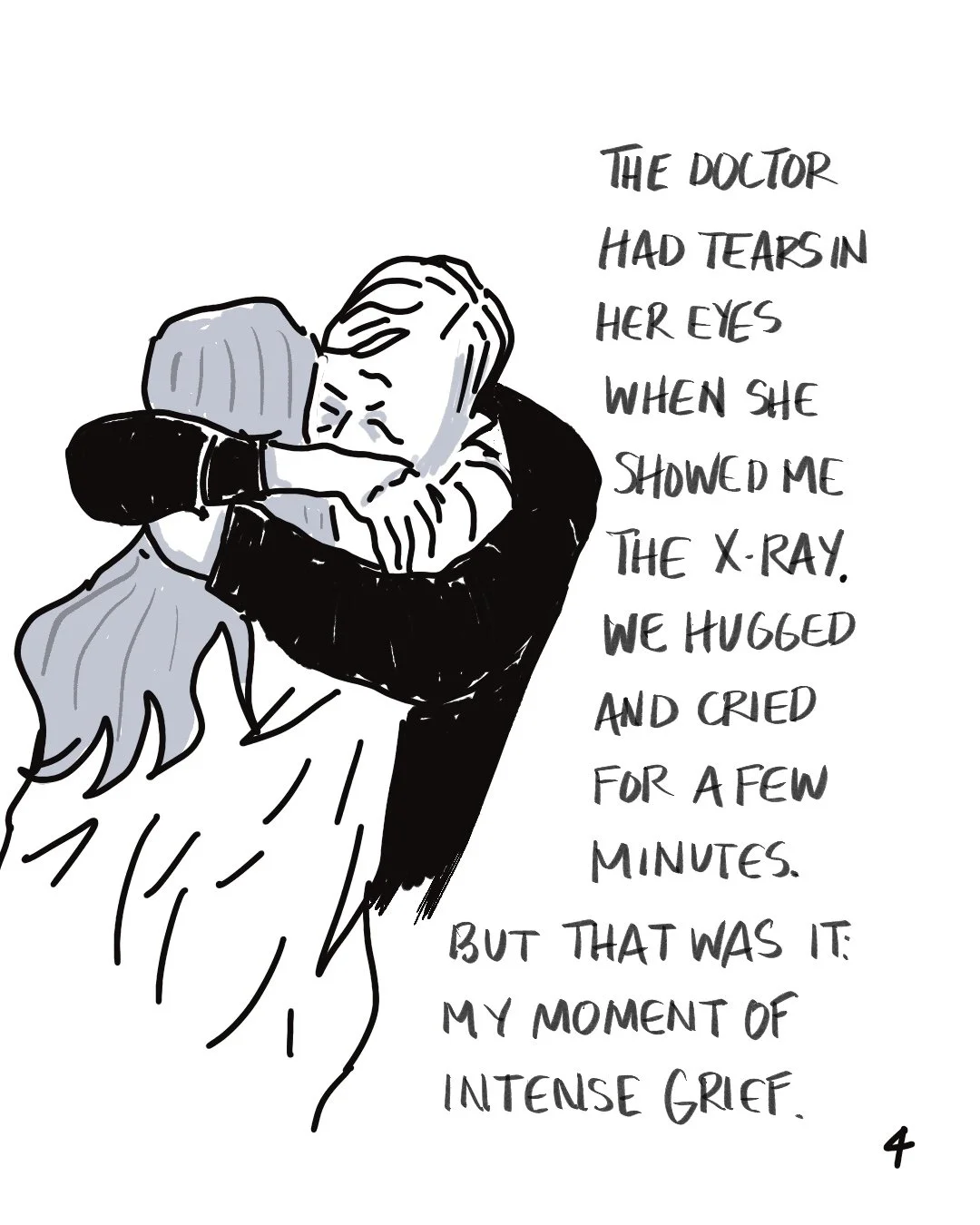

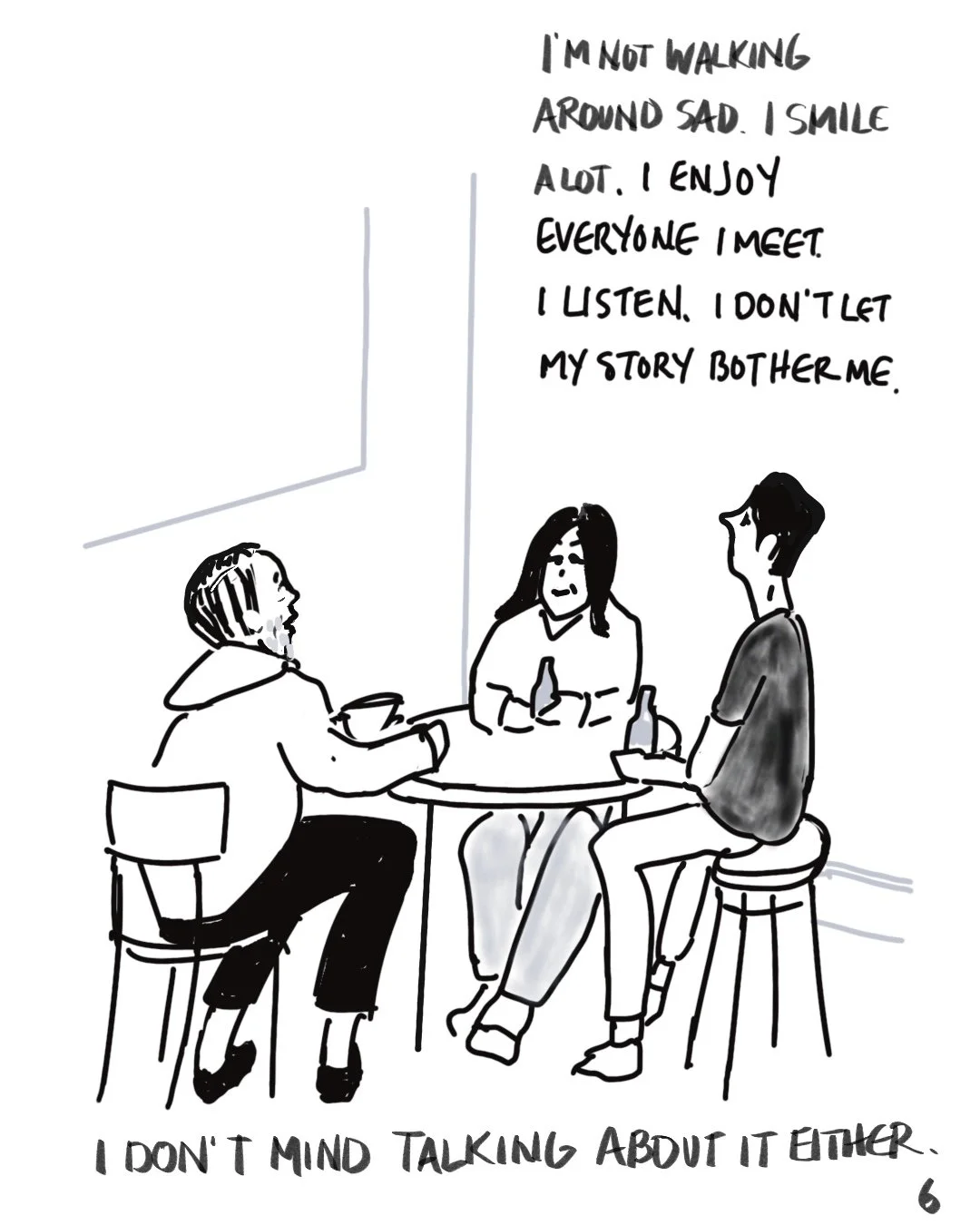
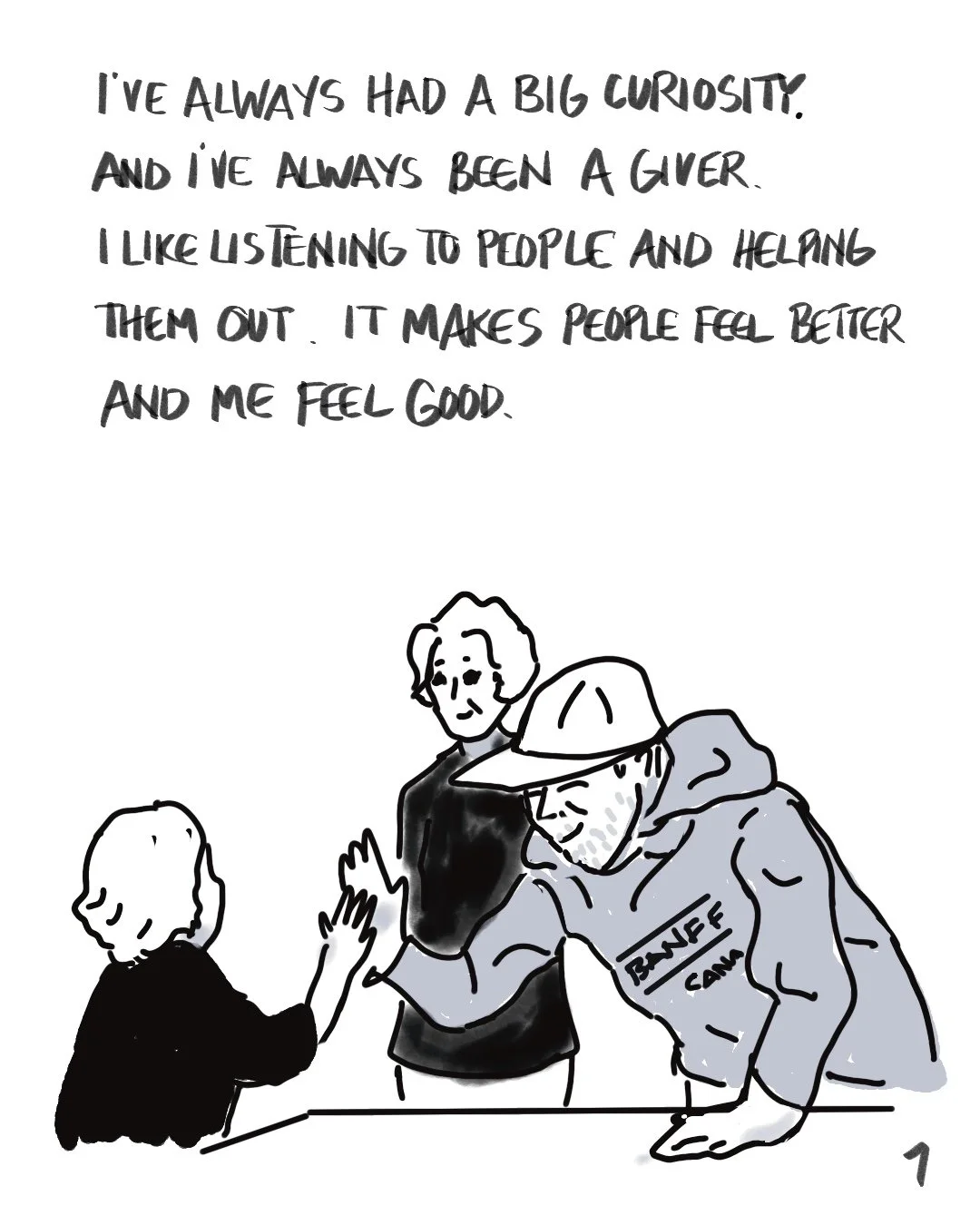

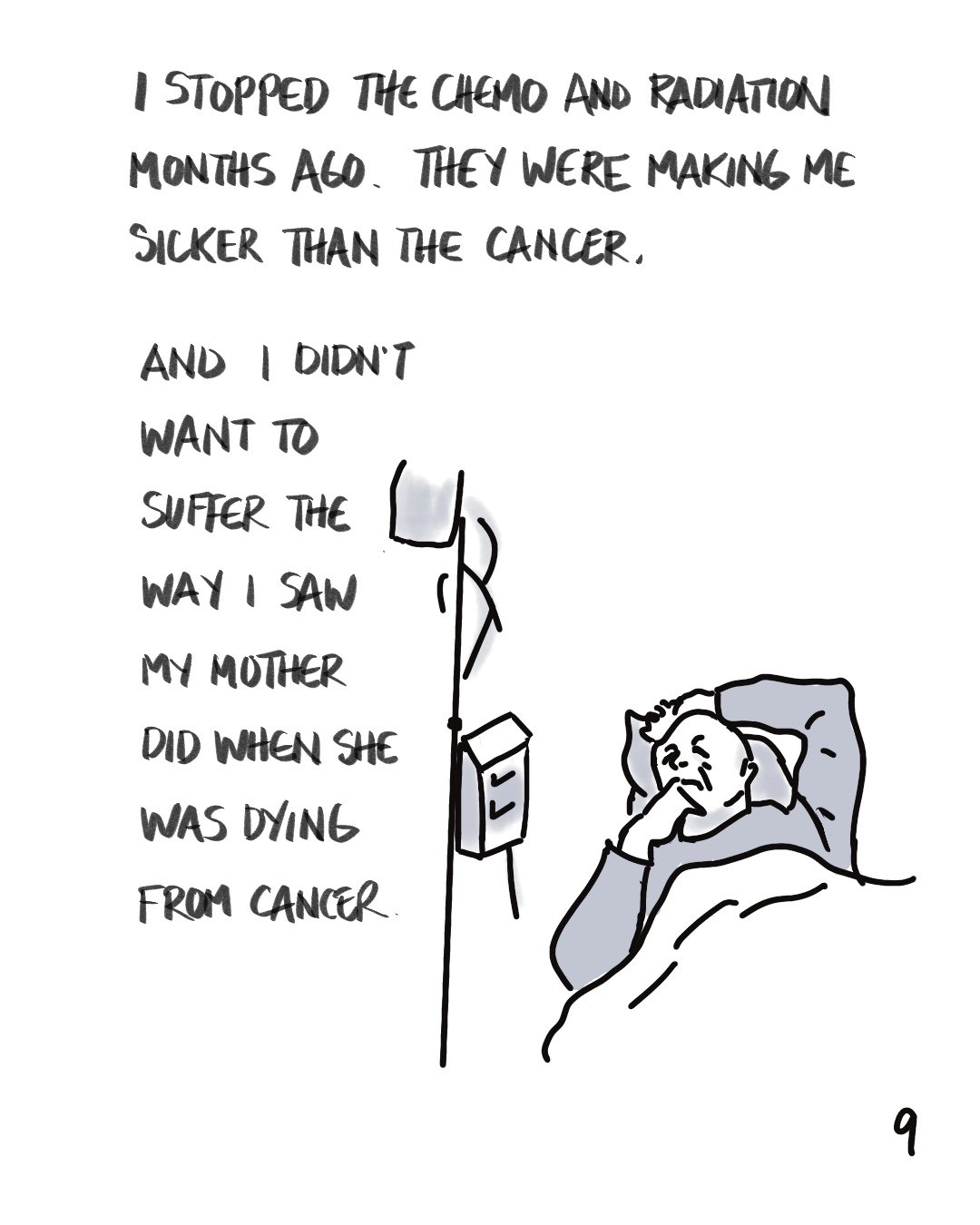
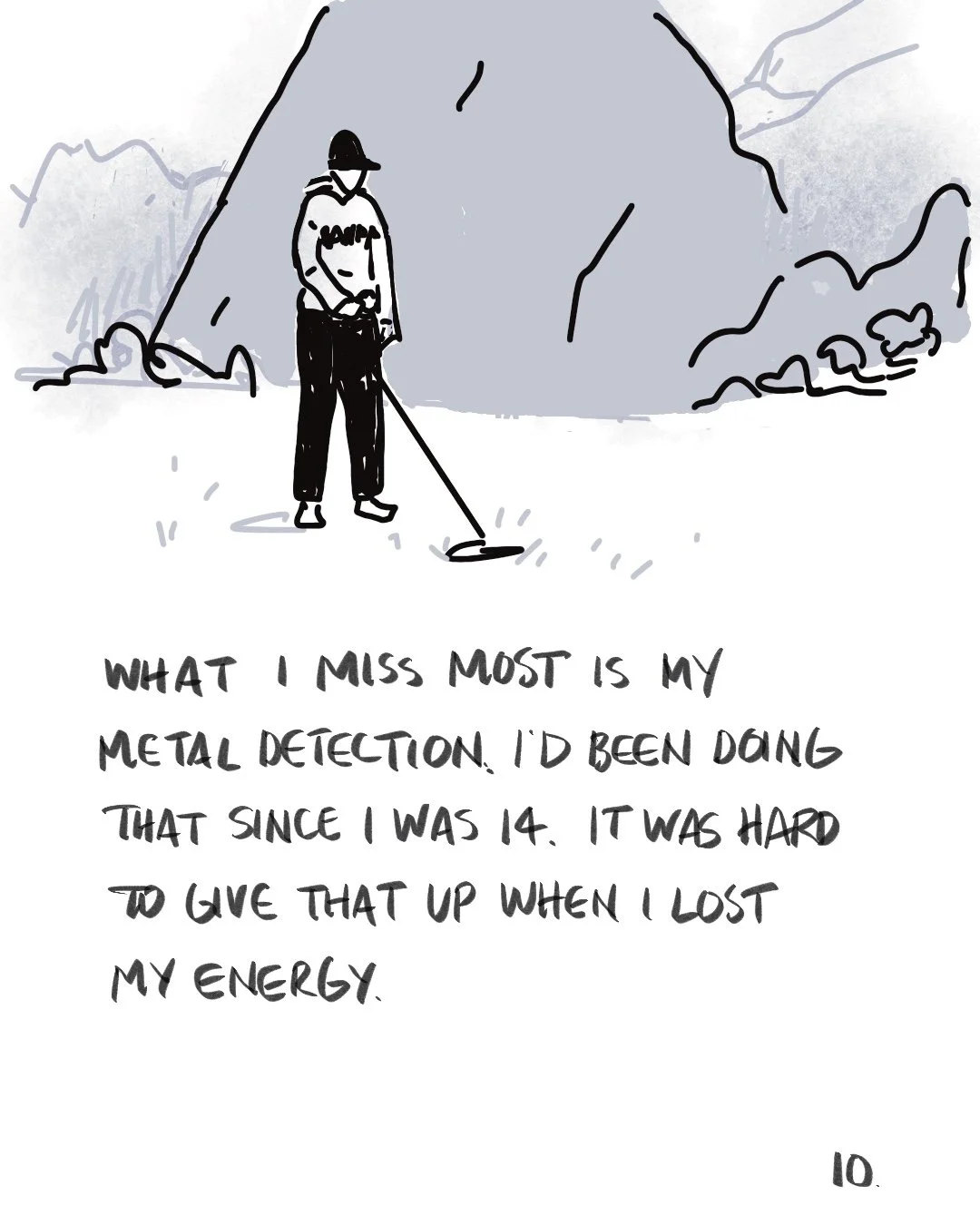
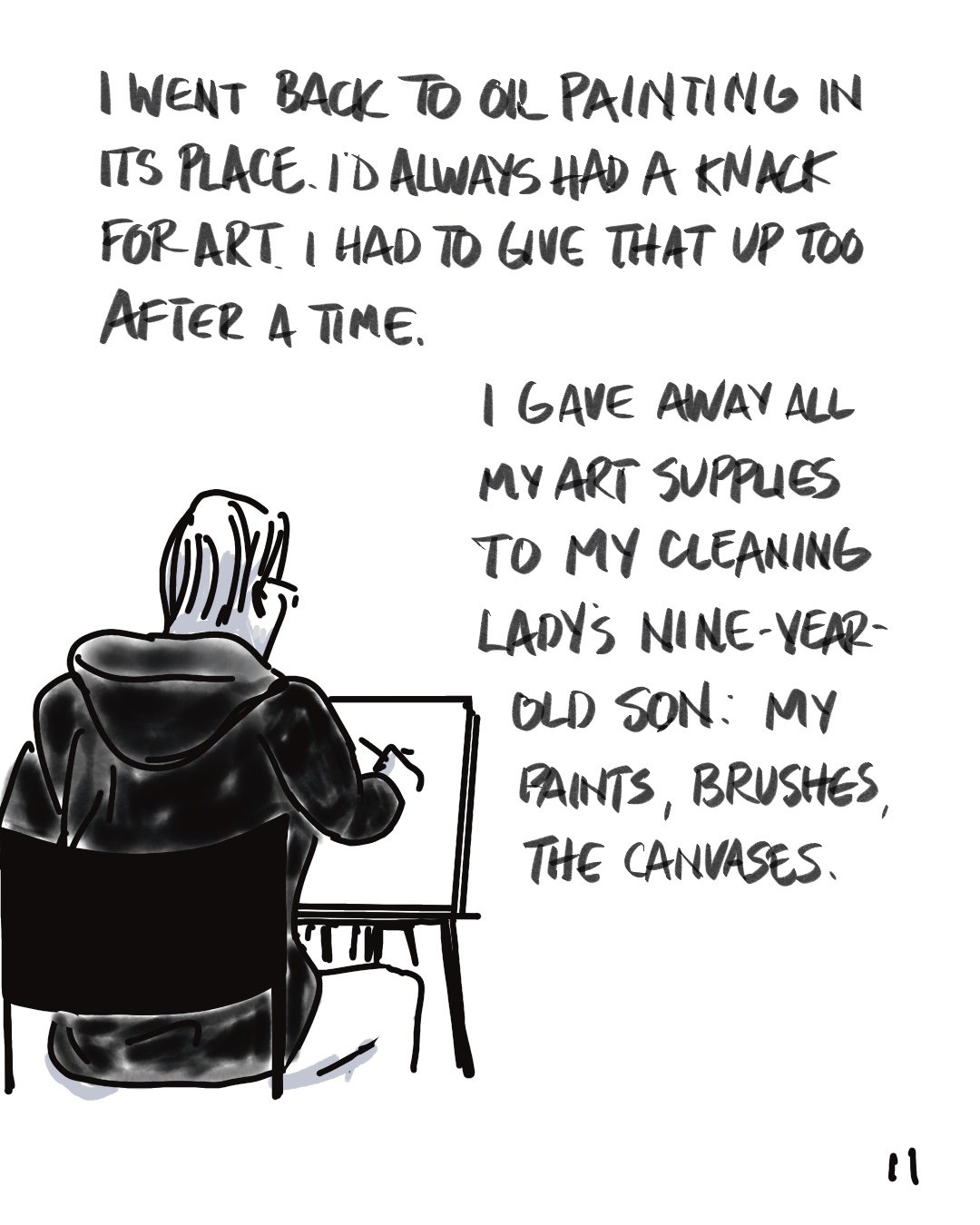
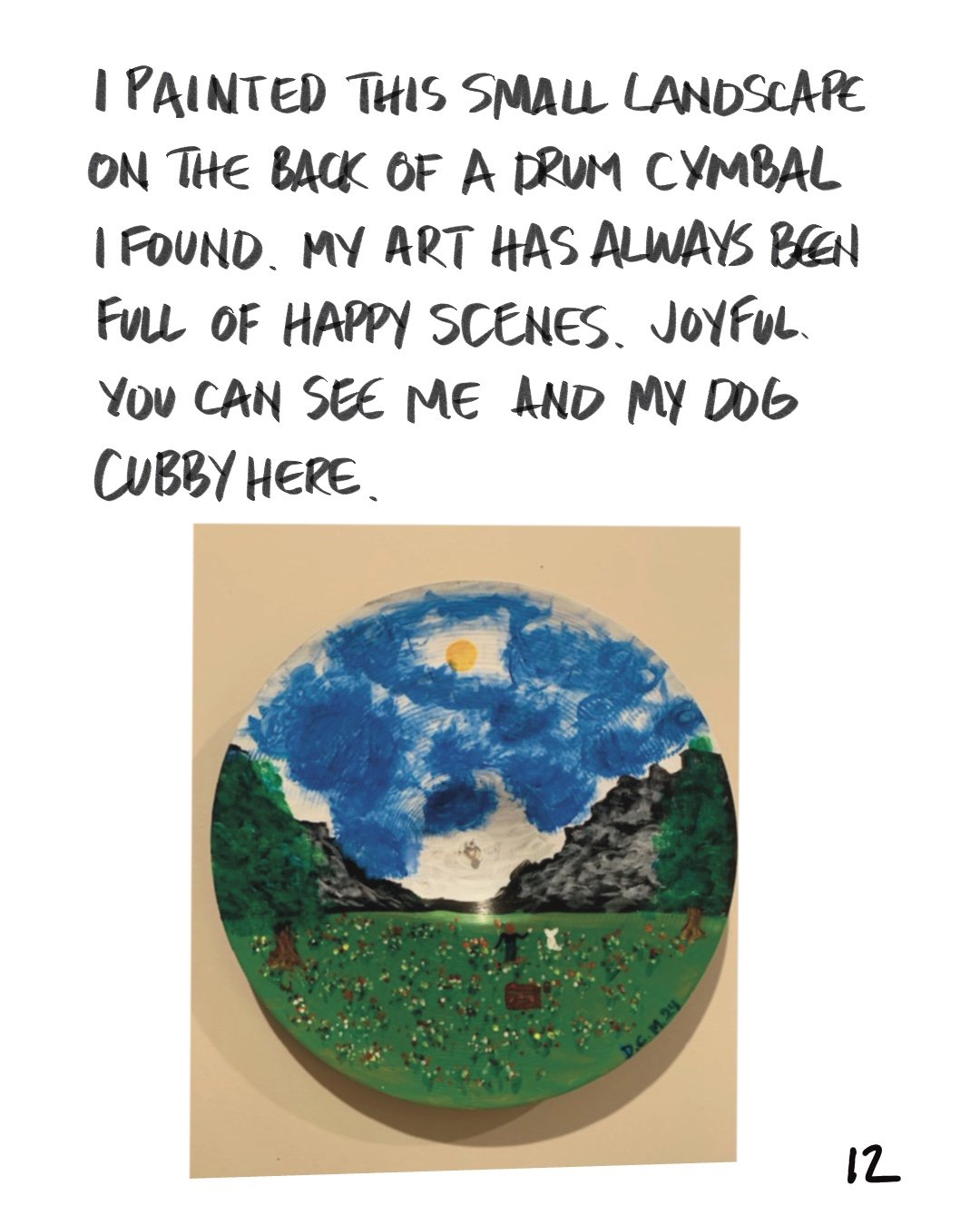
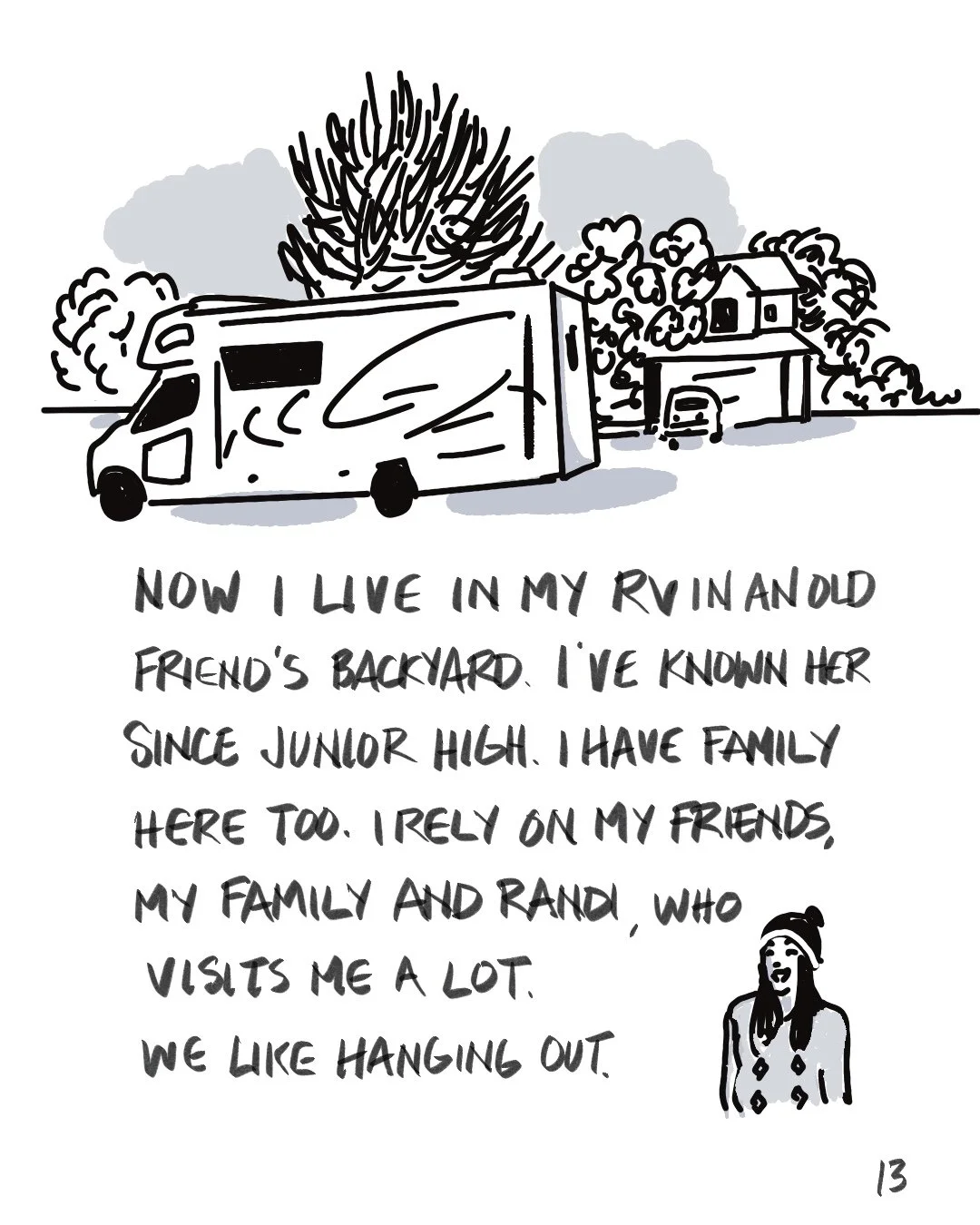

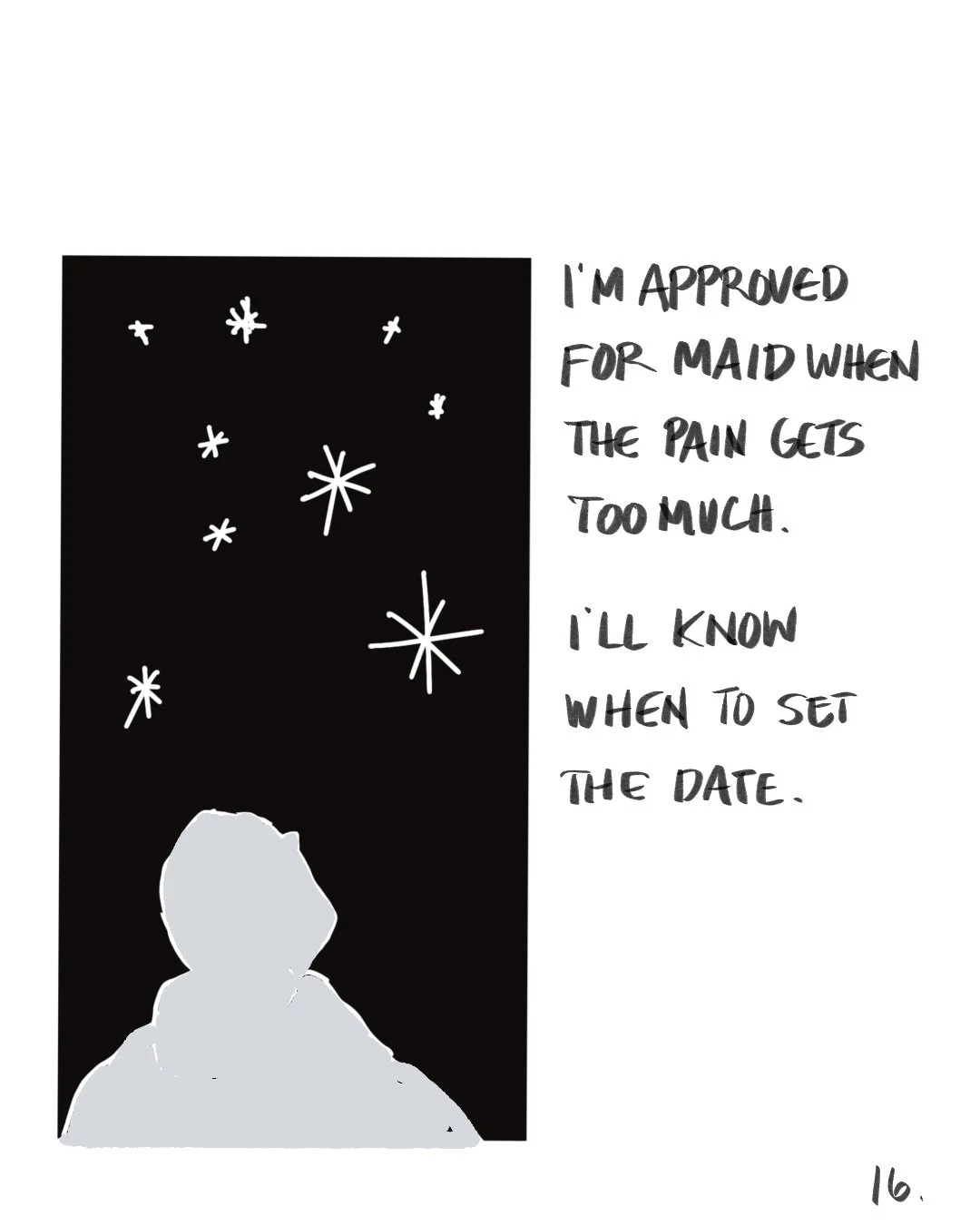
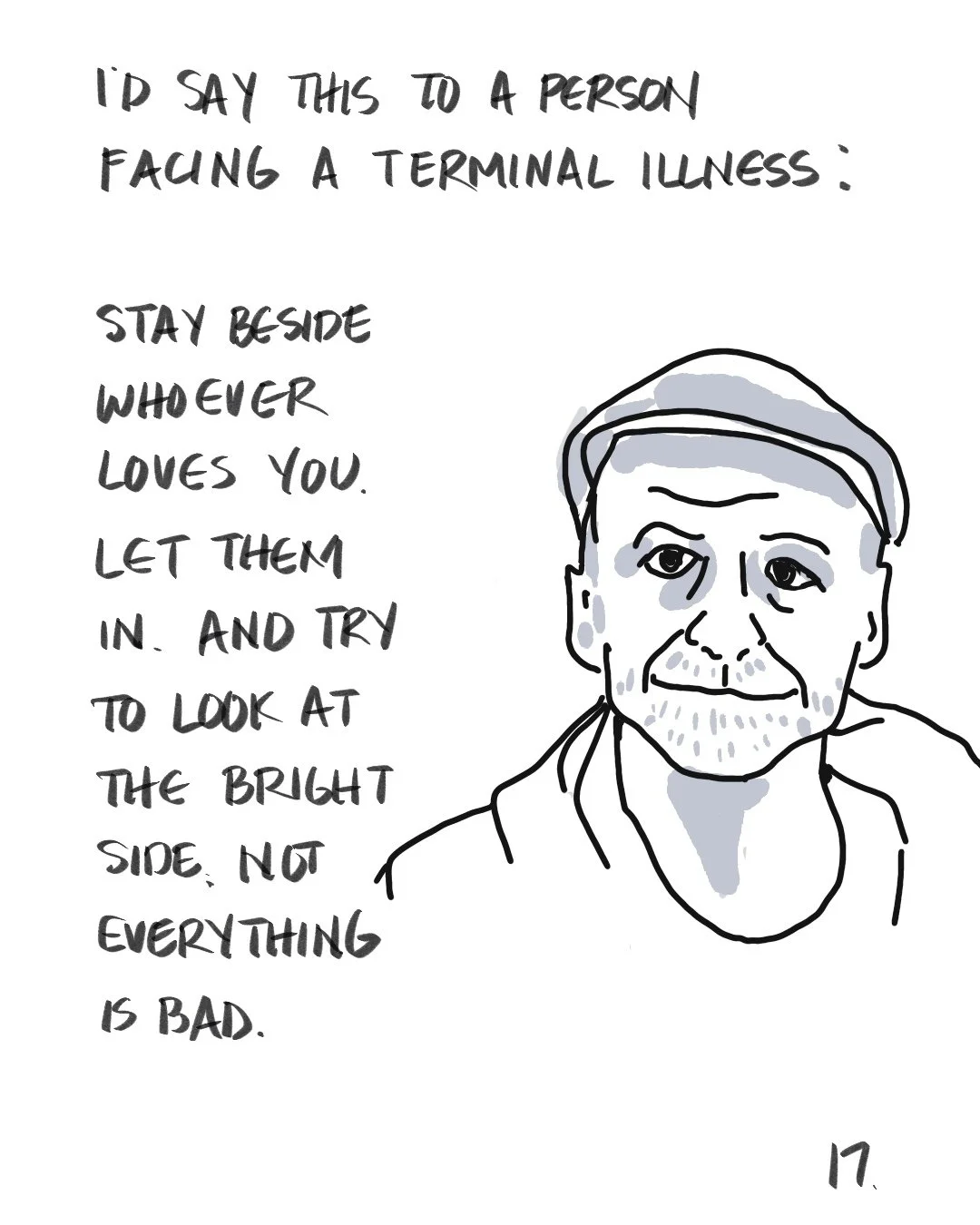

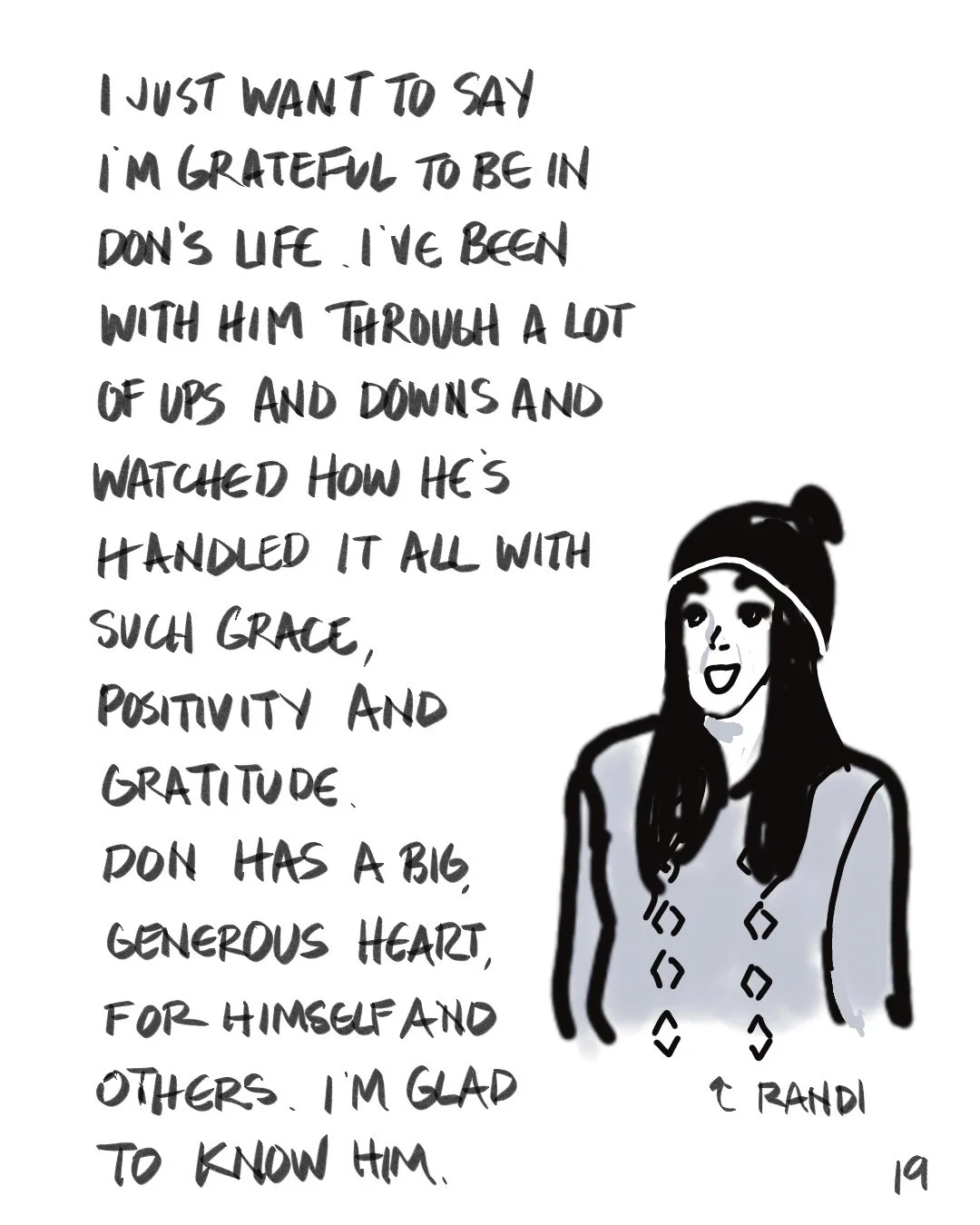

-
Susan MacLeod, BFA, MFA, authored Dying for Attention: A Graphic Memoir of Nursing Home Care (Conundrum Press, 2021). It received an award by the American Library Association and sold out after two print runs. As a cartoonist-in-residence at Grief Matters, Susan listens for community concerns and inspirations, using her art to bring greater awareness to these elements of dying, death, and grief. Visual narratives have a unique way of reaching people of all ages, simply and quickly, with messages that reach emotional and intellectual parts of the mind. Susan’s major influences are artists at the Graphic Medicine International Collective, a group that explores the interaction between the medium of comics and healthcare discourses.
Collaborators:
Grief Matters, Incorporated, works to advance grief and death literacy by mobilizing research knowledge into publicly accessible media. Founded by Mary Ellen Macdonald, J&W Murphy Foundation Chair in Palliative Care (Dalhousie), and Susan Cadell, Professor of Social Work (Renison College), Grief Matters focuses on improving how dying, death, and grief must be re-imagined as urgent public health issues.
Randip Dhaliwal, PhD(c) (Calgary) worked with the cartoon’s protagonist, Don, in her research on anticipatory grief among terminally ill palliative care patients. Working alongside Don was about documenting his story via legacy work, to advocate for meaningful resources and supports for individuals diagnosed with a terminal illness.
-
‘I’m OK’ is a 20-panel cartoon by artist Susan MacLeod, cartoonist-in-residence at Grief Matters, in partnership with Randip Dhaliwal, PhD(c), University of Calgary.
Grief research tends to focus on those left behind after death – the family, friends, and health care providers. This cartoon, in contrast, shines a light on the grief that dying people experience, including in relation to loss of life, loss of autonomy, relationships, and future hopes. This grief needs to be cared for too, while caring for a patient’s physical and psychological symptoms.
Don’s story demonstrates how cultivating a peaceful environment enables him to approach death with grace, comfort, and dignity. The cartoon shows how Don himself is cultivating this environment: his deep awareness, control, and personal agency brings him peace. He is steering his own life and leading with deep values. The title, ‘I’m OK,’ conveys his comfort with dying, which comes from his faith, his companionship with his late dog Cubby, his offerings to his community, including the intangible (wisdom experience), and tangible (art supplies). The care he is open to receiving from a compassionate physician, pastor, and old friends also contribute to his peace.
Dignity in palliative care is about honouring the whole person: their values, desires, sense of self. By choosing to live nomadically, Don is preserving what gives his life meaning – the freedom of the open road, the beauty of nature, the thrill of discovery – while still building and preserving his community. His choices reflect his convictions about what he wants for his death: forgoing chemo and having MAID as an option. Don’s story thus pushes against the narrative that terminal illness is characterized by passivity and burden. Don reclaims his story, refusing to let medical timelines or hospital walls dictate his ending. Panel 4 depicts an important moment when Don’s oncologist cried with him. The phrase, “we hugged,” shows a mutuality: how true care involves both patient and health professionals.
At one point, Don was facing unstable housing without choice. He evolved this situation to one in which it became his own choice: while living in an RV makes it difficult to access stable, quality care, it allows him to take back ownership of his life. Now, he lives this nomadic lifestyle with control and dignity, planning to visit places that matter to him. His is an empowering narrative, resisting labels like ‘homeless,’ ‘victim,’ or ‘marginalized,’ defying boxes and pushing back against pity.
Creative expression can bridge gaps between research and real-world understandings. In this cartoon, we see Don's own painting of himself, walking with his dog into the sunset. This image captures more than a personal moment: it showcases companionship, acceptance, and dignity at life’s end, concepts that can remain abstract for clinicians and outsiders. Don’s image brings end of life to the forefront of the conversation.
